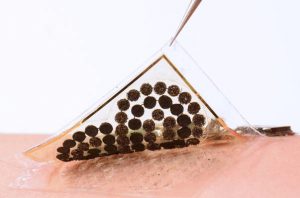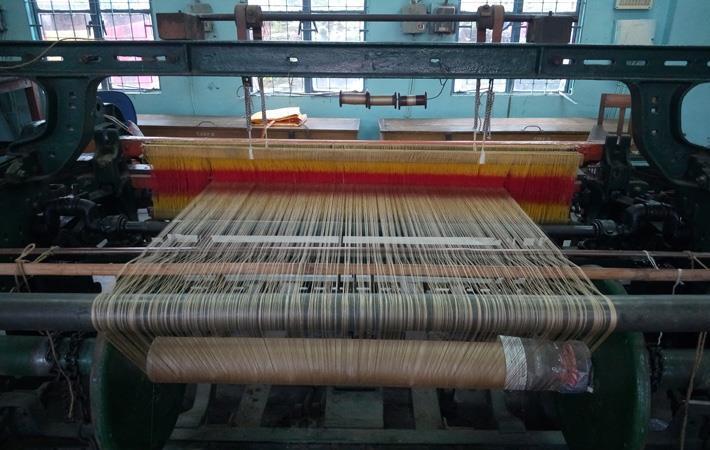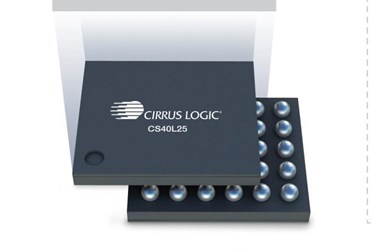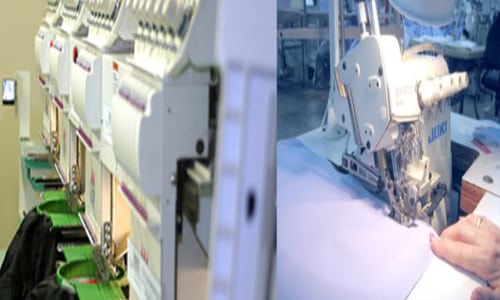
“One of the major challenges with these kinds of wearable devices is on the power side,” said CalTech research engineer Wei Gao. “Many people are using batteries, but that’s not very sustainable. Some people have tried using solar cells or harvesting the power of human motion, but we wanted to know: Can we get sufficient energy from sweat to power the wearables?, and the answer is yes.”The power source is lactate, which is combined with oxygen from the atmosphere inside fuel cells in the e-skin. Exhaust products are water and pyruvate – the latter a natural chemical made when the body metabolises lactate.Gao’s fuel cells are made from carbon nanotubes impregnated with a platinum-cobalt catalyst and composite mesh holding an enzyme that breaks down lactate. Rings of anode dots and rings of cathode dots are deposited in concentric rings in the proof-of-concept – see photo.
Cobalt, a transition metal, was added to the platinum cathode catalyst as this has been found to extend cathode life.Sharing a flexible substrate with the fuel cell are a reservoir capacitor, dc-dc boost converter, sensing electronics and a Bluetooth Low Energy transceiver (just visible at the back of the photo), with the electronics and connections encapsulated to prevent sweat causing malfunction.All power comes from the fuel cell which “can generate continuous, stable power output – as high as several mW/cm – over multiple days in human sweat”, according to the university. The numbers are around 2mW at around half a volt. Open-circuit voltage is 600mV.Fuel cell power was accumulated by the capacitor, charging cyclically between 1.5 and 3.8V, and power consumption was ~100μA at 3.3V during deep sleep, peaking at ~10mA during transceiver activity. 60 hours of continuous operation was demonstrated in a lactate solution.Four sensors were created for the project, for: urea, NH4+ ions, glucose and pH.“We want this system to be a platform,” said Gao. “In addition to being a wearable biosensor, this can be a human-machine interface. The vital signs and molecular information collected using this platform could be used to design and optimise prosthetics.”
Source: This news has been taken from www.electronicsweekly.com








